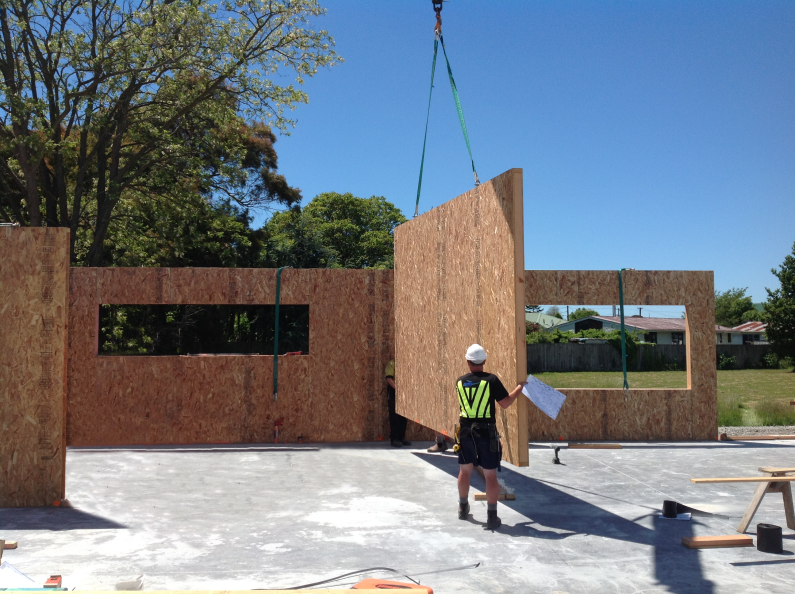Exploring Advanced Building Technologies (ABT) in New Zealand

The construction industry is continuously evolving, driven by the need for more efficient, sustainable, and cost-effective building solutions. Advanced Building Technologies (ABT) represent the forefront of this evolution, offering innovative materials and methods that address the challenges of modern construction. In New Zealand, several ABT options are gaining popularity for their superior performance and environmental benefits. This article explores what defines ABT, the various options available, and their best uses in the New Zealand context.
What is Advanced Building Technology (ABT)?
Advanced Building Technology (ABT) refers to innovative construction materials and methods designed to improve the efficiency, sustainability, and overall performance of buildings. ABT aims to address traditional construction challenges by enhancing thermal performance, structural integrity, construction speed, and environmental impact. Key criteria for ABT include thermal performance, structural integrity, construction speed, sustainability, cost, compliance with local standards, and the availability of support for builders and architects.
Options for Advanced Building Technologies in New Zealand
|
Criteria |
Formance SIPs |
Cross-Laminated Timber (CLT) |
Insulating Concrete Forms (ICF) |
Prefabricated Modular Construction |
Light Gauge Steel Framing (LGS) |
|
Thermal Performance |
Superior thermal insulation |
Good, may require extra insulation |
Excellent thermal mass and insulation |
Varies based on materials used |
Requires additional insulation |
|
Structural Integrity |
High strength-to-weight ratio |
Strong and stable |
Highly durable and resilient |
Depends on design and materials |
High strength, lightweight |
|
Construction Speed |
Fast due to pre-fabrication |
Rapid assembly |
Slower due to concrete pouring |
Very fast (off-site construction) |
Fast (precision manufacturing) |
|
Sustainability |
Reduced waste, local manufacturing |
Renewable timber, stores carbon |
Energy efficient, high carbon footprint |
Reduces waste, uses sustainable materials |
Recyclable material, energy-intensive production |
|
Cost |
High initial cost, offset by savings |
High initial cost, benefits in speed and sustainability |
High initial, labor-intensive, long-term savings |
Competitive due to reduced time and labor |
Moderate to high, depending on design and insulation |
|
Compliance |
CodeMark certified, 20-year warranty |
Widely accepted, strong timber industry support |
Suitable for seismic areas, widely used |
Needs to comply with NZ Building Code, customizable |
Well-accepted in NZ, especially for residential and light commercial |
|
Support |
Comprehensive Design Manual and support |
Industry support |
Established in commercial and residential projects |
Customizable to meet specific needs |
Precision manufacturing, ease of assembly |
Best Uses for Each Technology
- Formance SIPs (Structural Insulated Panels)
- Best Uses: Ideal for residential and commercial buildings requiring high thermal efficiency and rapid construction. Excellent for projects prioritizing sustainability and long-term energy savings.
- Examples: Energy-efficient homes, schools, and commercial buildings.
- Cross-Laminated Timber (CLT)
- Best Uses: Suitable for multi-story residential and commercial buildings due to its strong and stable properties. Preferred for projects aiming to use renewable materials.
- Examples: Multi-story apartment buildings, office buildings, and public structures.
- Insulating Concrete Forms (ICF)
- Best Uses: Perfect for buildings in seismic areas requiring high durability and resilience. Provides excellent thermal mass and insulation for energy efficiency.
- Examples: Foundations, basements, and walls in both residential and commercial buildings.
- Prefabricated Modular Construction
- Best Uses: Ideal for projects needing very fast construction times and reduced on-site disturbance. Can be customized to meet various design and performance requirements.
- Examples: Temporary housing, modular offices, and customized residential buildings.
- Light Gauge Steel Framing (LGS)
- Best Uses: Suitable for residential and light commercial buildings needing high strength and lightweight properties. Good for projects requiring precision and ease of assembly.
- Examples: Residential homes, light commercial buildings, and industrial structures.
Summary
Advanced Building Technologies (ABT) offer significant benefits over traditional construction methods, including enhanced thermal performance, structural integrity, construction speed, and sustainability. In New Zealand, options like Formance SIPs, CLT, ICF, Prefabricated Modular Construction, and LGS framing each have unique strengths and ideal applications. By understanding and utilizing these advanced technologies, builders and developers can create more efficient, sustainable, and resilient buildings, meeting the demands of modern construction while supporting environmental goals.
References
- Building Research Association of New Zealand (BRANZ)
- New Zealand Green Building Council
- CodeMark Certification
- Formance SIPs
- WoodWorks NZ - Cross-Laminated Timber
- ICF Builder Group
- PrefabNZ
- Steel Construction New Zealand (SCNZ)
These references provide additional information and resources on the various advanced building technologies discussed in this article.






